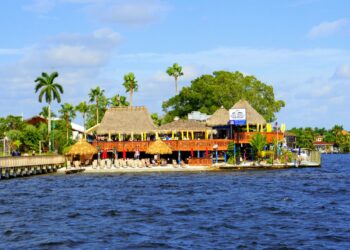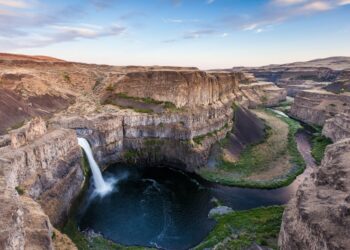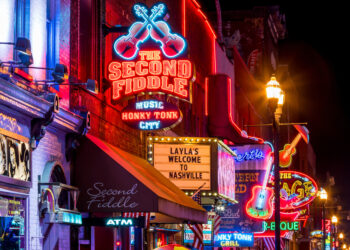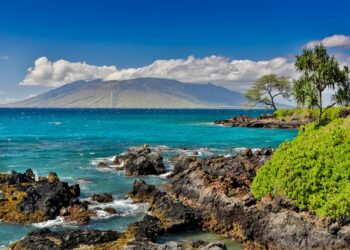While Mexico has always been famous among North Americans, it’s also a favorite of tourists worldwide.
Visiting Mexico doesn’t just mean sunny days on beautiful beaches; it also involves getting immersed in the country’s rich cultural heritage–many of which having been recognized by UNESCO.
Affiliate Disclaimer: Our blog posts may contain affiliate links. If you make a purchase through these links, we receive a modest commission at no extra cost to you. These commissions help us fund our team of travel writers, allowing us to continue providing you with the latest travel news, tips, and inspiration. Your support keeps this blog alive and thriving, and we appreciate it immensely. Thank you!
These heritage sites have lasted generations, giving tourists a glimpse of the past and allowing foreigners to learn about native culture and that of Spain, its colonizer.
These traces of the past are evident in everything from their food to their entertainment. When away from the city, one can also admire its environment, rich in life and greenery.
Mexico has deserts, beaches, and rainforests, guaranteeing a spot for every kind of tourist.
Here are the top five attractions to see in Mexico.
1. Great Pyramid of Cholula
The Great Pyramid of Cholula, an ancient Aztec temple, also known as Tlachihualtepetl (which means “man-made mountain”), is supposedly the largest pyramid in the entire world.
Though the Great Pyramid of Giza in Egypt is the most famous, its base is around four times smaller than the Great Pyramid of Cholula’s.
The reason people don’t talk about the Great Pyramid of Cholula might have something to do with the fact that it’s hidden.
It resembles a mountain more than a temple, buried underneath dirt and grass.
What’s funny is that even Spanish conquistador Hernan Cortes mistook it for a mountain and even constructed a church right on top of the hidden temple.
Most historians agree that natives had built the Great Pyramid of Cholula circa 300 BC in honor of Quetzalcoatl, a feathered-serpent deity. It’s made up of six layers likely made of adobe.
Ancient Aztecs have been conducting worship in the pyramid for about a thousand years before being abandoned for another temple.
Cortes reportedly massacred natives and destroyed religious buildings in 1519, but the Great Pyramid of Cholula remained hidden.
2. Copper Canyon

Often referred to as the Grand Canyon of Mexico, this UNESCO World Heritage Site is more prolonged and more profound than the American tourist attraction.
Situated in Chihuahua, Mexico, the Copper Canyon comprises six different canyons anyone would love to explore.
The El Chepe is a tourist’s favorite way of getting around the Copper Canyon.
The train allows people access to small towns between Chihuahua and Los Mochis. Coming from Los Mochis, the first place tourists will get to see is El Fuerte, a colonial city on the banks of the Rio Grande.
The next stop would be Bahuichivo, where one can visit the Urique Canyon, one of the deepest canyons in Mexico.
It’d also be interesting to know the natives in Batopilas, where the Indigenous Raramuri people reside.
The Copper Canyon Adventure Park is a beautiful family attraction that even has a zipline and aerial tram.
More adventurous tourists might want to hike the canyon, but it’s advisable to enlist a local guide’s help if they’ve never been to the Copper Canyon before.
3. Mexico City’s Historic Center
While Mexico City is quite large and famous, its art galleries and museums aren’t the only places tourists should visit while in the area.
A great spot to focus on touring is the Centro Historico de la Ciudad, Mexico City’s historic city center.
The region spans 15 square kilometers, featuring over 1,400 colonial buildings tourists wouldn’t want to miss.
The Historical Center is considered a UNESCO World Heritage Site because of how much history lies within its walls. Its structures hold seven centuries worth of history, dating back to the Aztecs.
For instance, the urban plaza Zocalo is part of what remains of a 14th-century Aztec city.
However, most of the Historic Center structures are traced back to Spanish colonization, which lasted 300 years.
Unfortunately, much of the Historical Center was neglected when its population boomed and reached the millions.
The Fundacion Centro Historico, founded in 2000, now aims to preserve the History Center.
4. Chichen Itza
This UNESCO World Heritage Site is a sacred pre-Hispanic, ancient Mayan city.
It measures up to 10 square kilometers in Yucatan, Mexico.
Historians believe that it was once a great city center, featuring commercial use spots, politics, military, and religion.
At one point, 35,000 people supposedly lived in Chichen Itza, and being located near water sources is likely what started the community.
The water source led to its name, “mouth of the well” of the Itza, the people who lived there.
This attraction, located east of Merida, has numerous ancient buildings that tourists can visit.
While there once were as many as hundreds of buildings standing in Chichen Itza, there are over 30 still standing today.
The ruins are from either part of the Maya Period or part of the Maya-Toltec Period.
Most people might know of Chichen Itza because of Kukulkan’s Pyramid, El Castillo, around 75 feet tall.
This step pyramid is notable for its sunlight and shade to form a serpent’s body’s shape on the stairway during the vernal and autumnal equinox.
5. Los Cabos Corridor
The Los Cabos Corridor is a coastal corridor measuring 20 miles, connecting Cabo San Lucas and San Jose del Cabo.
It’s family-friendly, but it also offers nightlife with numerous luxury resorts and fun beach activities.
The corridor is also quite well-known for golf, with several golf championships held close to where whales are often spotted.
Beaches like Santa Maria have golden sand and waters safe enough to snorkel in.
Some beaches have volcanic rock formations, while others are known less for their land and more for their bouncy waves for surfers.
Children are also never disappointed by the large, exciting theme park in the Los Cabos Corridor.
While many think of the people who founded the resorts as the corridor’s founding fathers, Los Cabos Corridor has a much deeper history, back to when granite monuments were forming dating back 30 million years.











